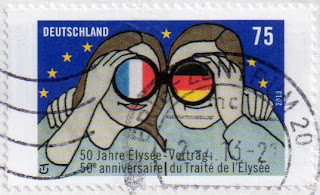Card no 485 – Brigitte
Goslar am Harz
Country Card Sent From: Germany
Place that Card Sender Lives: Ammersbek
Date Received: 6th April 2013
Distance Travelled: 547 miles
Time Taken: 6 days
The copper, lead and tin mines of Rammelsberg mountain, in the Harz region, were worked continuously from the 11th century until the 1980s. They bear outstanding testimony to mining installations and practices in Europe, both in terms of surface and underground remains, particularly from the Middle Ages and the Renaissance period. Since 1992, the mine and the Old Town of Goslar have been entered on the UNESCO World Cultural and Natural Heritage List for all Mankind.
Goslar played an important part in the Hanseatic League because of the richness of the Rammelsberg metal-ore veins. From the 10th to the 12th century it became one of the seats of the Holy Roman Empire. Its historic centre, which dates back to the Middle Ages, is perfectly preserved, and includes some 1,500 timber-framed houses from the 15th to 19th centuries.
The Upper Harz mining water management system, whch lies south of the Rammelsberg mines and the town of Goslar, has been developed over a period of some 800 years to assist in the process of extracting ore for the production of non-ferrous metals. Its construction was first undertaken in the Middle Ages by Cistercian monks, and it was then developed on a vast scale from the end of the 16th century until the 19th century. It is made up of an extremely complex but perfectly coherent system of artificial ponds, small channels, tunnels and underground drains. It enabled the development of water power for use in mining and metallurgical processes. It is a major site for mining innovation in the western world. Brigitte actually stayed in the hotel on the left of this card in January.
The stamp celebrates the 50th anniversary of the Elysée Treaty between the Federal Republic of Germany and the French Republic signed at the Elysee Palace January 22, 1963 by German Chan-cellor Konrad Adenauer and French President Charles de Gaulle. The Elysée Treaty sets out the ob-jectives of increased cooperation between Germany and France in the fields of international rela-tions, defense and education.



No comments:
Post a Comment
Welcome. I love it when visitors comment - even if it's only to say "Hi, I've been here!"